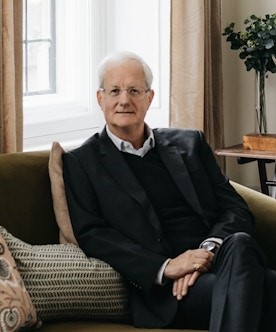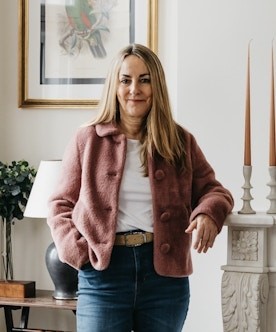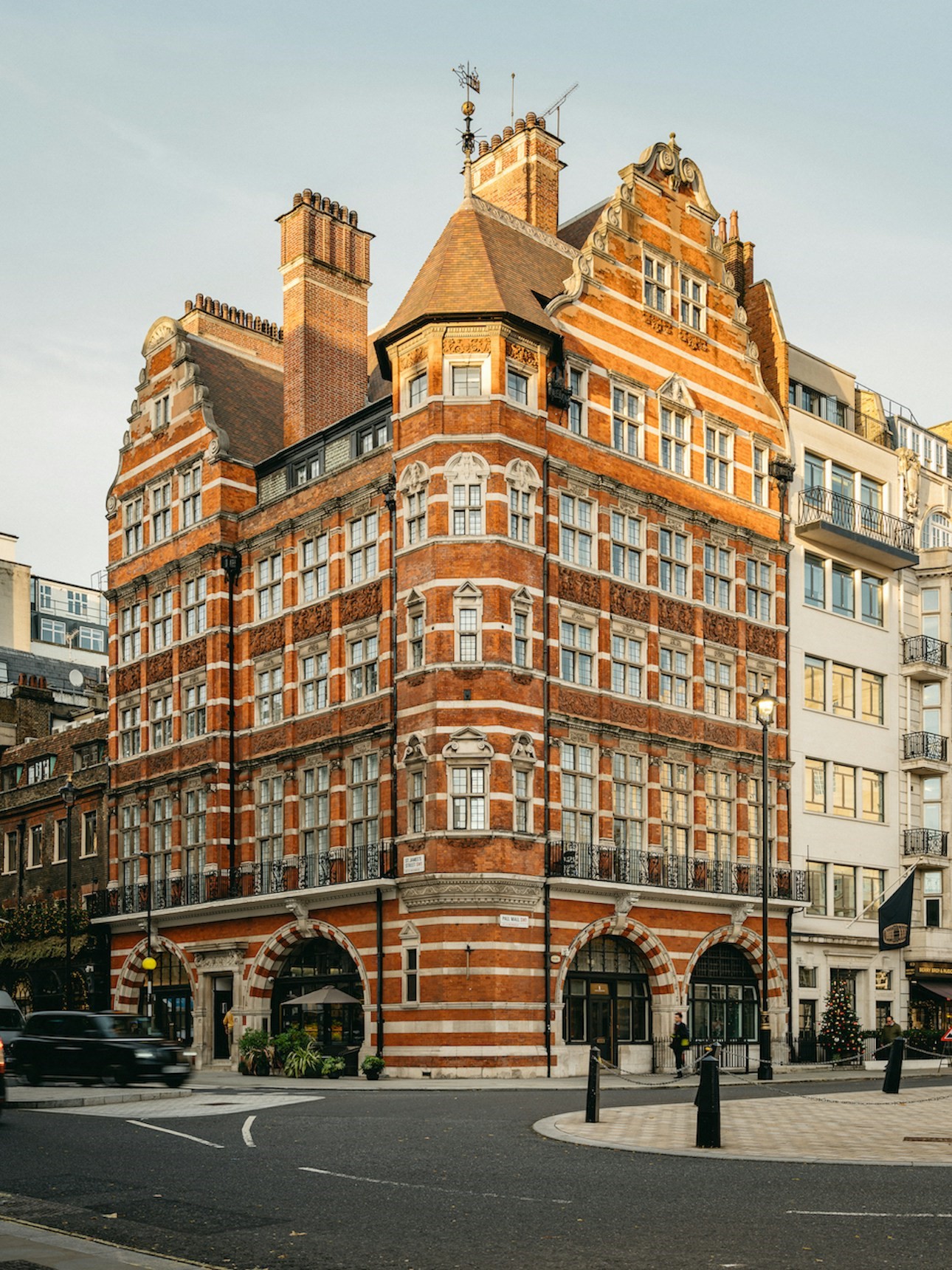The following article is reproduced from a featured article by PrimeResi, London’s leading news, insight, news and opinion resource for the UK’s prime residential property sector.

PrimeResi: You founded Obbard 30 years ago, with ambitions to “bring something genuinely different to the prime London market and to make this sometimes complex, high-risk world navigable for all”. How has the business evolved, and were there any big lessons you learnt early on?
|
Hugh Obbard: When we first started, there was no reference to price per square foot, there was no accessible data, the concept of yield was a mystery to most agents. The commercial world worked on these sorts of numbers, but residential was still very fluffy. In Asia, where I’d worked for the previous five years, everything was always based on price per metre, so Obbard became among the first to apply it in the UK market. One of our proudest creations in the early days was a comprehensive yield analysis we devised which accurately worked out IRR, cashflows, vacancy variables, and so on. Then, as the quality bar was rising in the top-end of the rental market, but quality of choice remained mixed, we created a ‘branded portfolio’ approach, based on the idea that we should only offer ‘the best of the best’. Very soon, we found that inbound enquiries were being prefaced with ‘Have you got any of your properties available |
 |
Fast-forward to today, and we see clients increasingly looking for individuality – whether in the property they choose to live in, or the professionals they work with.
Consequently, the market is seeing a boom in smaller, consultative practices, where advice, service, and relationships are tailored precisely to each client and their needs and objectives. We’ve led that trend.
The business now operates three “connected practices”: property management & lettings; design & build, and property acquisitions & sales. Which of these generates the most revenue, and would you regard one in particular as your “core” business?
HO: The honest answer is that revenues are determined by market cycles.
Acquisitions have always fluctuated. One of the reasons we’ve been able to prosper over the past three decades is having a bedrock of recurrent income. Our portfolio has actually shrunk in recent years – but the rent roll has increased dramatically, because of the values we deal in today. The most significant growth in the past 10 years has definitely been on the design & build side.
Obbard has bought, let and managed over 1,000 properties over the past three decade, and developed or refurbished more than 350; is there a specific attribute you always look for in a potential development project or acquisition?
|
Patti Patrick: Only that real value is created. This could be through planning [extending GFA is the most obvious value-add option], or just a simple refresh. If the added value isn’t to be realised immediately, one needs to ensure that any investment made now is going to offer tangible payback later on. Hence the timeless/classic approach we have tended to deploy – and adherence to the ‘location, location, location’ rule. Are there any particularly memorable deals or projects that stand out?HO: A few examples… |
 |
Just after the global financial crisis, we bought the St James’s Club & Hotel for clients based in Pakistan. This came on the back of a plum acquisition and refurbishment for them on Cadogan Place.
There was a flat in Bayswater we acquired for £701,000, refurbished it for around £250k – and had it valued for refinancing eight years later at £4.25m.
We refurbished a Holland Park villa bought by an Indonesian client for £54m and watched David Beckham playing football with his children in the garden next door.
PP: Last year we finished a fabulous development at 1 St James’s Street in Mayfair for Berry Bros. We sent somewhat against the grain of generic high-end design – by applying sustainability as a core principle to the project, and deploying an unashamedly ‘heritage’ style that we understood would complement such a prominent Grade-II Listed building. We continue to rent and asset-manage it today.
Last year, we sold two flats in the same Kensington block for one owner. The first hit a new price psf record which enabled us to achieve another new price psf record for the second.
HO: But it hasn’t always gone our way! We partnered with a US client to develop a string of properties, mainly in Knightsbridge, where the returns were superb – but stamp duty rising to 15% killed off that golden goose.

No.1 St James’s, an Obbard project for Berry Bros & Rudd.
Who is the typical Obbard client?
PP: For the first half of our existence, our client base was predominantly among investment-focused expats working across South-East Asia – thanks to the network Hugh had built in his five years working in the region. Then, as many of them relocated globally, our base expanded with them. We reckon we’ve acted for people from or based in 41 different countries.
Our current client roster is very mixed in terms of nationality, country of residence – and motive. The focus used to be on investment, but now our clients are often buying with a dual motive – where there’s a strong personal factor (second home, base for kids to go to school/university, future home, etc), but their financial commitment requires it to work as an investment, too.
Also, as we’re primarily a buy-side agent, our design & build arm Obespoke opens up more options for buyers. It gives them the confidence to look at properties that need to be reconfigured or upgraded to meet their specific needs, tastes, and budget.
What have been the biggest changes in the prime London market since you launched the business?
HO: Undoubtedly political meddling, and it just gets worse. See the rushed-through Leasehold & Freehold Reform Bill!
And what about shifts in design trends?
PP: When it comes to investment, it’s crucial to stay relevant to current trends while building in long-term value. For private clients, the range of options is much broader, but the key is to reflect their unique personality.
Our design process is always fully tailored to the individual. People now want beautiful spaces that feel personal and distinct, rather than simply resembling luxury hotel suites. And it flows through into the upper end of the rental market as well.
We’ve also become passionate about incorporating sustainability into our interiors in meaningful ways. Which includes sourcing antique and artisanal pieces, commissioning UK-based independent suppliers, using eco paints and materials, and restoring vintage furniture. All of these add the sorts of unique touches we know our clients want.
If you were in charge of Government for the day, what one policy would you implement to improve the state of the UK housing market?
HO: So far as the big picture goes, I’d want to drive a bulldozer through the sclerotic planning laws, so that more homes relevant to real earnings can be built across the country. It should be a huge national priority.
Closer to the world Obbard usually operates in, I’d be keen to engage with private landlords as part of the solution, and not part of the problem.
What’s the feeling amongst your clients about the upcoming General Election, and the prospect of a Labour government?
HO: While there is a certain nervousness about a left-wing administration, the feeling is that both Starmer and Sunak are essentially centrists – and that whoever wins has few tools to play with.
What impact do you think recent Leasehold Reform legislation will have on London’s property market?
HO: I suspect it will prove to be a net positive over time, but the manner in which it’s being introduced undermines whatever little confidence was left in the current government’s approach to housing policy.
What’s your best advice for making sure a development or refurb project gets delivered on time – and on budget?
PP: It’s all in the prep. Never rush to get the builders on site, and leave decisions on the specifications to come later. Never ask for competing contractors’ quotes/estimates without both being based on exactly the same spec. Remember that even small changes along the way can have expensive ramifications – both in terms of budget and timeframe. Have everyone (project manager, QS, contractor, designer, suppliers, etc) working as a team and not competing with each other.
How do you keep yourself and your team motivated and energised?
PP: I think the creative process is infectious – even to those who aren’t directly involved. Having long-standing relationships makes things less stressful and more efficient, and so more enjoyable for all, including the client. Being a boutique firm means we have a relatively small numbers of deals and projects on the go, in comparison with larger corporates, so our relationships with clients are quite personal and we do become more emotionally invested than other companies would!
Obbard projects often involve world-class craftspeople and artisans. How do you find the best specialists for a job, and ensure they are reliable?
HO: The joy of a business like Obbard is that you come across people along the journey. Patti has just returned from Italy having met the most amazing designer who we are itching to engage. What she offers is so unique and so close to our ethos, where we look to employ genuinely sustainable materials and products and want to match the design to heritage buildings in the most sympathetic ways. Also, reliability comes easiest when you are able to draw on an established relationships going back 30 years.
Where do you see London’s prime property market heading in the next a) 12 months and b) 5 years?
HO: After a decade of next to zero growth for prime central London, I’m cautiously optimistic that we’re close to a new growth cycle. Values are down by some 26% (inflation adjusted) while rents across central London are up 38% over the past 10 years. Once base rates start to fall, the yield carry and affordability will look appealing and the value opportunity will become apparent.
Where and what would you personally buy now with a budget of a)£1m and b)£10m.
HO: At the lower level I’m a believer in the East London story (approximately a half-mile radius of Silicon Roundabout in Shoreditch). It attracts the younger high earners and has great access to the tech corridor, the financial centre and the legal quarter. For a truly progressive vibe with a great food and entertainment scene, it’s the place to go.
For the top end, I’d focus on houses in the more traditional areas within Chelsea, Kensington, St Johns Wood and a few others. When it comes to picking out houses in central London, the key thing to remember is that value is inescapably linked to width.
What’s next for Obbard?
PP: Another 30 years – but with some younger faces coming through!
What’s the best piece of advice you have ever been given?
HO: Be honest to yourself and those in front of you.

